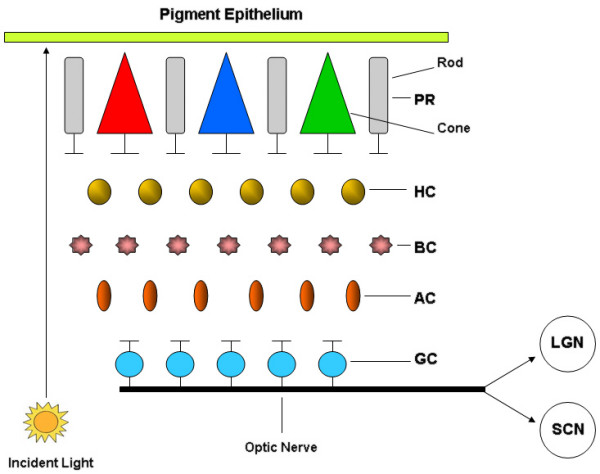Figure 1.

Illustration of ocular photic transmission pathway. As light enters the eyes, it is absorbed by photopigments in either the rods or cones in the photoreceptive field (PR), which convert it into a voltage signal. The signal triggers a cascade of synaptic activities through activation of second-order neurons: horizontal cell (HC), bipolar cells (BC), and amacrine cells (AC), some having excitatory action and others inhibitory. The ganglion cells, referred to as third-order neurons, then carry photic input all the way to the thalamus, projecting either to the suprachiasmatic nuclei (SCN) or the lateral geniculate nucleus (LGN). A subset of intrinsically photoresponsive retinal ganglion cells (ipRGCs), expressing melanopsin and cryptochromes, feed the circadian system.
